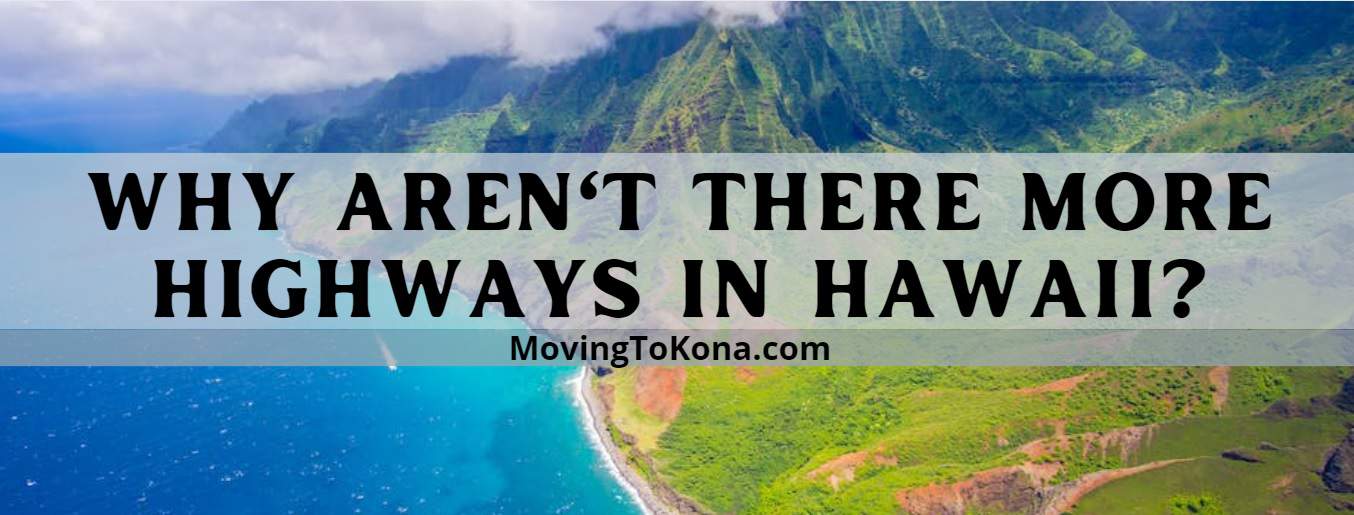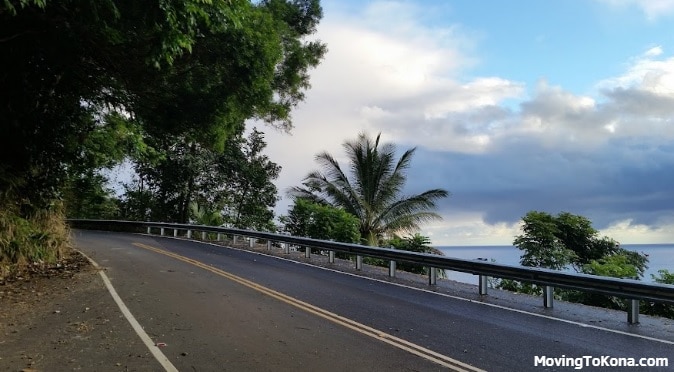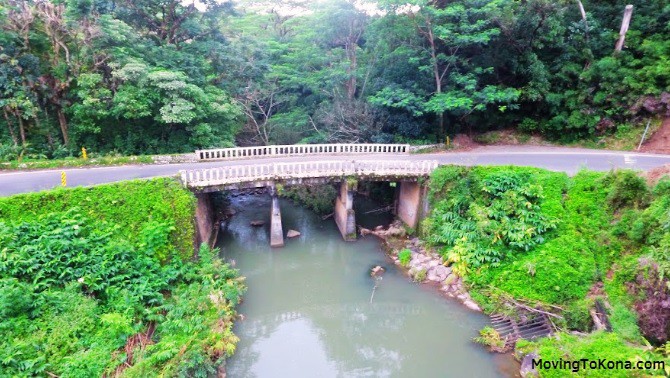Why Aren’t There More Highways in Hawaii?

What Are the Reasons Why There Aren’t More Highways in Hawaii?
1. The Hawaiian Islands are very spread out
The Hawaiian Islands are spread out so that there aren’t more highways due to the unique geography of the archipelago. Since the islands are composed of several smaller islands, it would be very expensive and challenging to build highways that span across all of the islands. Instead, locals use the words makai and mauka when giving directions, with makai meaning towards the ocean and mauka towards the mountains. Honolulu residents also use “Diamond Head” (toward Diamond Head) and ewa (away from Diamond Head) to give directions as well. These methods help people get where they need to go without needing to build more highways. Additionally, the lack of highways makes it easier for visitors to enjoy the scenic beauty of Hawaii without having to worry about the traffic and congestion that highways may bring.
2. The terrain is very hilly
The terrain of Hawaii is extremely challenging for highway construction due to its steep slopes and unpredictable climate. The Waipi’o Valley road, for example, runs from 279m to 7m above sea level, with the average grade being 25% and the peak grade reaching 40-45%. This makes it one of the steepest roads in the world, and it is ultimately too steep for cars with regular two-wheel drives. Furthermore, the weather conditions in Hawaii can be unpredictable, making it difficult to build a road that can handle the potential of heavy rain or mudslides. The potential of road failure due to landslides is also present, with the County of Hawaii recently deciding to close the road indefinitely due to the risk of slope and roadway failure. Ultimately, the terrain of Hawaii is difficult for highway construction due to its steep slopes, unpredictable weather conditions, and the potential of slope and roadway failure.

3. There is a lot of traffic
The traffic on highways in Hawaii is especially bad, with Honolulu ranked as the nation’s most congested city for populations between 500,000 and 1,000,000 in a 2019 study done by Texas A&M. This is partially because of the large number of tourists that flock to the islands, especially those in popular areas like Waikiki and Ala Moana, who often get distracted and try to cross the road without warning. Additionally, Oahu’s street designs have not been updated in over a century, leading to complicated intersections, like the one at King Street and Waialae Avenue, that require careful maneuvering and make it difficult to merge onto highways like the H1 Freeway. This is why Hawaii has serious laws in place to help keep drivers safe and focused while driving, and why it is important for both tourists and locals to be aware of their surroundings and drive with extra caution.
4. There are limited transportation options
The limited transportation options in Hawaii contribute to the lack of highways in the islands. The most common form of transport is by car, which can be relatively affordable but also comes with its own challenges. The roads are well-signed but can be rough and traffic laws are in place to keep motorists safe. Oahu has public transportation in TheBus which is great for getting around Honolulu, but not ideal for getting to the other sides of the island as it can take a long time. Additionally, many rental car agreements prohibit traveling down certain roads, so driving into Waipi’o Valley is not recommended. Tour companies provide transportation options to and from Waikiki, but this does not allow for complete freedom of movement.
Interstate highways provide quicker travel over long distances, reliable evacuation routes and are important for the military. However, funding for the highways is not provided by each state, but rather by the federal government, which further limits the availability of highways in Hawaii. Although the islands have a few highways, they are not as extensive as they are in mainland USA, making car transportation the primary mode of travel in the islands.
5. The cost of building highways is high
The cost of building highways in Hawaii is significantly higher than other states due to the tropical environment and terrain. The costs can range from $2 million to $70 million per mile depending on the terrain and the extent of the construction. This is in stark contrast to the costs in other states, which typically range between $1 million and $6 million per mile. The Federal-Aid Highway Act of 1956 authorized the construction of freeways, with the total cost of the project reaching $130 billion by its completion in 35 years. This is a testament to the complexity and expense of building highways in Hawaii.
6. There aren’t a lot of people living here
The lack of highway development in Hawaii is due to its unique geography and population size. Hawaii is an archipelago made up of several islands, with no connecting roads. This makes it difficult to build and maintain highways, as the islands are spread out and the population is relatively small. Additionally, Hawaii does not observe Daylight Savings Time, meaning there is not as much difference in daylight between summer and winter, so people may not be inclined to drive during the long winter months. The traffic congestion in Honolulu, which is ranked among the highest in cities of its size, is another reason why highway development has been limited in Hawaii. As such, highway development in the islands is not practical or cost-effective, given the small population and unique geography of the state.
7. There are a lot of natural resources
Building highways in Hawaii can be challenging due to the natural resources of the islands. The islands of Hawaii are spread out, making it difficult to connect them with a single, continuous highway. Additionally, the terrain of Hawaii can be unpredictable, with steep valleys and mountains that can make it difficult to build roads. The island’s often tropical climate can also contribute to the difficulty in building highways, as rain and extreme temperatures can make construction difficult. Finally, the Hawaiian Islands have an abundance of lush plant life, which can make it difficult to clear away enough land to build a highway. All of these natural resources make it difficult to build highways in Hawaii, making it important to consider alternative forms of transportation.
8. There are a lot of tourist attractions
Hawaii has a range of tourist attractions, from stunning beaches to beautiful waterfalls, and each of these can limit the number of highways available. Highway 30 is the most popular route for tourists, as it takes you on a 35-mile-long adventure along the coastline of Maui’s North Circle. This route offers breathtaking views of the island, and is home to popular tourist destinations like Lahaina, a coastal city offering whale watching experiences.
Other scenic routes are also available on the islands of Maui and Hawaii, such as the Road to Hana, which takes you to the largest island in the archipelago, and the Papohaku Beach Park, which offers incredible views of the ocean. The Garden of the Gods and the Kalaupapa National Park are also popular spots to explore, as they give visitors a glimpse of the island’s natural landforms and wildlife.
Finally, the volcanic Wailua Falls, Akaka Falls, and Volcanoes National Park are also great places to visit, as they offer thrilling hikes, exciting educational facts, and thrilling views of the Hawaiian landscape. Each of these attractions limit the number of highways in Hawaii, as they all require visitors to travel and explore on foot, or with the help of a guide or tour group.

9. The weather is unpredictable
The tropical climate in Hawaii can create unique challenges for the construction of highways. Rainfall can lead to dangerous road conditions such as potholes and slick surfaces, making it difficult to safely operate vehicles. Earthquakes can also cause serious damage to roads, requiring the need for repairs or even complete reconstruction. Flooding can be a significant issue, requiring roads to be closed until the water recedes. Severe weather such as wind and geomagnetic storms can damage infrastructure, making it necessary to undertake repairs. Poor weather can also lead to cruise line cancellations, which can impact the flow of traffic on highways. All of this highlights the importance of taking measures to ensure the construction of highways are able to withstand such conditions.
10. There are a lot of lands owned by the government
The Hawaiian Islands are home to a large amount of government land, much of which is used for military purposes. This has an impact on the building of highways in Hawaii, as these government lands cannot be used to build highways on. This has caused the state of Hawaii to have to find other routes for highways to be built, which can be much more costly and time consuming.
The large amount of government lands in Hawaii have been necessary to ensure the safety of the United States from a potential Soviet invasion. This has led to the building of interstate highways in Hawaii, which are funded by the federal government to ensure quick and reliable mobilization of the military if needed.
The reason for the large amount of government lands in Hawaii is also due in part to the diverse population of the state. Hawaii is the only state that has never had a majority of Caucasians, and the government lands are used to ensure that the native population and culture are preserved.
The large amount of government lands in Hawaii has an effect on the building of highways in the state, as these lands cannot be used for building highways. This has caused the state to find other routes for highways to be built, which can be more costly and time consuming. Additionally, it has caused the state to rely heavily on the federal government for funding for its highways.
Overall, the large amount of government lands in Hawaii has been necessary to ensure the safety of the United States and to preserve the native population and culture. It has also had an effect on the building of highways in the state, as these lands cannot be used for building highways. This has caused the state to find other routes for highways to be built, which can be more costly and time consuming.
